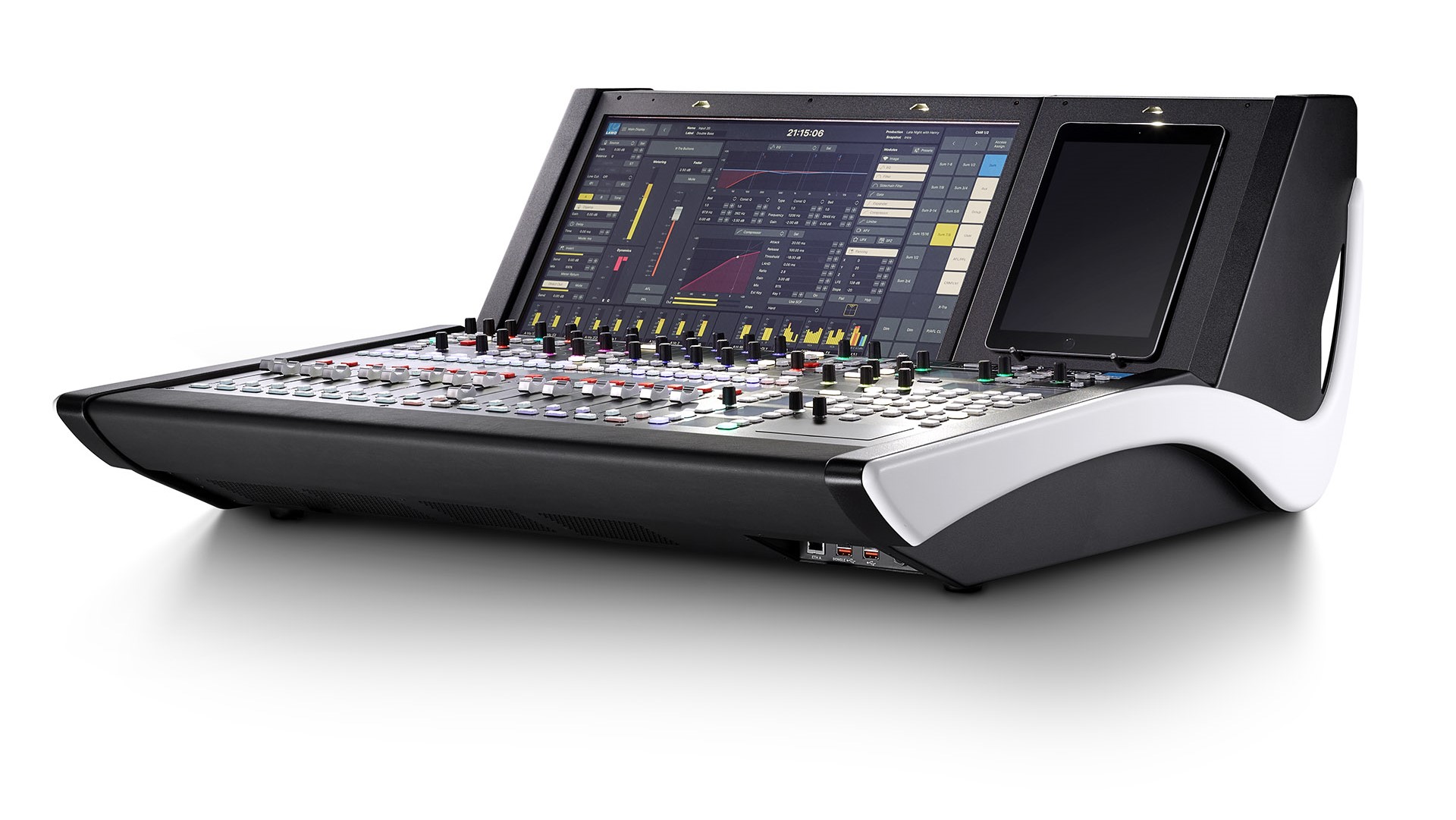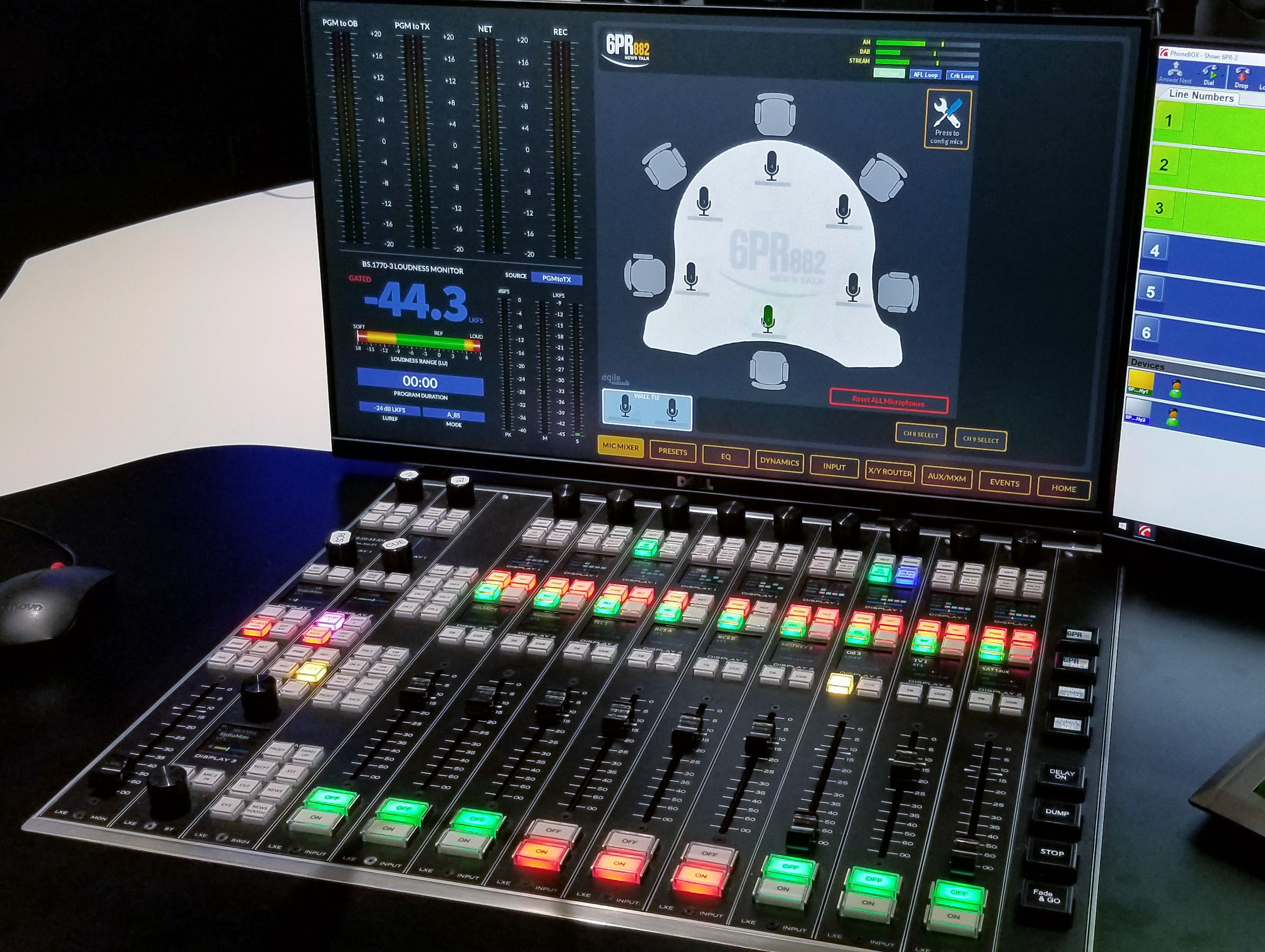How Has COVID Impacted Audio At-Home Production?
Vendors respond with updated features

LONDON—All technology evolves and adapts to suit the changing requirements of its end users. Audio consoles have been through significant changes over the last 30 years, with analog giving way to digital for large-scale television, radio and live event production. This in turn has led to smaller desks, with more touchscreen control and, increasingly, mixing “in-the-box” on digital audio stations (DAWs).
While these refinements and alterations have taken place over time, the outbreak of coronavirus and the impact of national and local lockdowns on broadcast and facility operations have had more immediate effects on mixing console design. The most obvious of these is the adaptation of desks for home working, which can be regarded as positive and was already beginning to happen.
HOME CONTROL
“The pandemic has accelerated the take-up of working from home,” agrees Andreas Hilmer, director of marketing at Lawo. “We have designed that capability into our consoles, which can be used for a range of applications. These include distributed production, where an operator can be in an audio room next to the main production suite or another building or a different city.
“It can also be used for home working, with a full console in the studio, being controlled by software, a touchscreen and maybe a compact fader bay by somebody in their kitchen,” Hilmer added. “All the live audio stays in the audio suite, with only the control chain going to the home.”
Just before Christmas, Lawo launched second-generation versions of its compact mc² desk and audio console engine. In an event streamed live from the Jazz Club Karlsruhe, near the company’s headquarters in Germany, the new mc² 36 and A_UHD (ultra high density) Phase II Core were introduced.
Hilmer explained that Lawo always tries to rejuvenate its product line at regular intervals and this updating brought a new platform for the entire mc² range and additional capabilities on the mc² 36, which was originally introduced in 2014, including native IP mixing and more powerful DSP.
PHYSICAL OR VIRTUAL: DOES IT MATTER?
Another company that has seen its ongoing development find almost instantaneous acceptance during the COVID-19 crisis is Wheatstone. In what Senior Sales Engineer Phil Owens describes as a “flurry of software development” during March, Wheatstone created the ReMIX app, which controls the software mixer in I/O BLADES interfaces and is designed for Windows tablets and PCs.
Get the TV Tech Newsletter
The professional video industry's #1 source for news, trends and product and tech information. Sign up below.
Wheatstone also offers the ability to create virtual consoles through the combination of the ACI (automation control interface) protocol and ScreenBuilder suite of touchscreen tools.

Owens observes that with such new technologies, whether a physical or a virtual console is being used “doesn’t really matter.” What is important, he says, is remote connectivity, which has become the most requested feature from Wheatstone clients.
Owens adds that the same attitude applies to whether mixing is carried out using a dedicated control surface with faders or “in-the-box.”
WHILE SOME THINGS CHANGE ...
Peter Walker, senior product engineer at Calrec Audio, acknowledges that priorities during 2020 due to the circumstances brought about by COVID-19, with a focus on safe, reliable and flexible workflows.
“Because of this, there’s definitely been an increase in automation/remote control for smaller productions,” he says. “But live broadcast still needs high-quality systems with niche broadcast features. Regardless of the controller type, processing and routing are still at the center of the sound suite, whether it is located in an audio studio, a local equipment room or a server center.
“Practical considerations such as DSP resources, flexible routing, mix minus feeds and IFB mixes all existed before COVID and still exist,” Walker added. “Broadcast networks will always require refined control.”
The argument against touchscreen-based mixing for live production has always been that it does not have, as Tom Knowles, broadcast systems product manager at SSL, says, “the immediacy of physical, tactile controls.” But, he adds, the sound desk is no longer a standalone unit, it is often part of an integrated system of distributed components.
“Physical surfaces, software control interfaces, DSP computer and I/O devices are the building blocks that perform audio console functions,” Knowles said. “Systems can be scaled to meet the task at hand, providing the flexibility and agility a traditional console may not have provided, with the connecting software being the key element.”
COMPACT DESIGN
Blackmagic Design has been at the forefront of the trend toward more software-based operations, notably with the DaVinci Resolve suite of color correction, editing and visual effects tools. Version 17 of Resolve also includes Fairlight sound editing and mixing capability, which, when used in conjunction with the Fairlight Audio Accelerator, can handle up to 2,000 tracks, which is typical on film soundtrack mixes these days.
Recent trends have moved away from relying on large digital consoles for routing and distribution to DAW-based systems with additional DSP for larger systems, according to James Townsend, digital audio technical sales specialist with BMD.
“The console’s role then becomes one of control, providing the fastest possible interface for the software,” he said. “It provides familiarity for the operator, who can concentrate on the picture while working instead of continually scrutinizing a DAW user interface.”
BMD has different options for this new role, from large-scale Fairlight consoles to the new Desktop Consoles.
VIRTUAL AND SCALABLE
Telos Alliance has fully embraced virtualized audio mixing with the new Axia iQs software, which has AES67 audio over IP (AoIP) capability as well as being cloud deployable. Martin Dyster, vice president of business development for Telos Alliance, comments that the global broadcast market is rapidly leaning toward a remote production model.

“That looks as though it will be here for keeps, long after COVID has been suppressed or controlled,” he says. “Customers are looking for truly virtualized, rapidly deployable and scalable solutions, not just a means to remote control the back-end of a ‘traditional console.’”
The iQs is described as “multipurpose” and Telos/Axia is also moving beyond its traditional radio market with the physical console that was launched at the 2019 IBC Show. Dyster comments that the company’s Quasar AoIP mixing console is being sold into TV as well, which further extends the reach of audio over IP, something Telos has been advocating for many years, into the visual production domain.
All of the major console manufacturers producing desks for TV work offer some form of AoIP capability: Wheatstone with its own WheatNet-IP system, Calrec (both Dante and RAVENNA), Lawo (RAVENNA/AES67), SSL (Dante) and BMD. With its extended connectivity capabilities, the audio console is now much more than a means of mixing sound. Whether it will evolve fully into the virtual realm is debatable, but it shows no signs of finishing its development any time soon.
